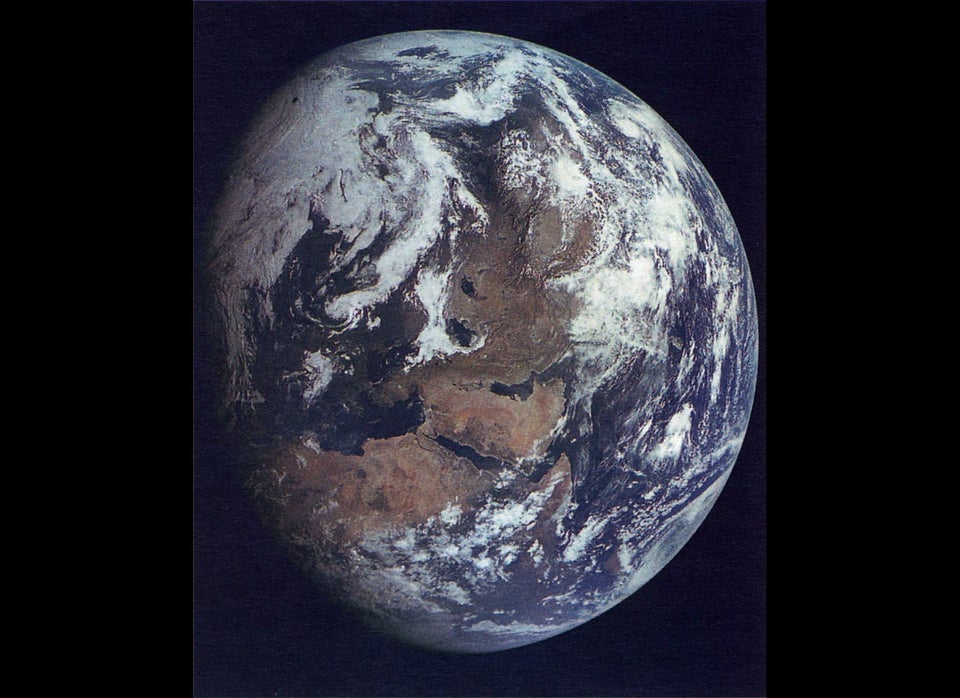Have you ever thought about what's under your feet? I mean, really, really deep down in the center of the Earth? Right now, a Japanese-led team is planning to drill and collect samples of our planet's mantle, roughly 6.2 miles (almost 33,000 feet) below the ocean floor. They want to learn more about regions that are currently only illustrated in textbook artists' conceptions.
And they aren't the first explorers to venture far below our terra firma. Half a century ago, a team of scientists attempted to drill through the Earth's crust in a mission called Project Mohole. They never reached their goal, but they did capture the imaginations of the American people, including famed author John Steinbeck, who wrote a feature about the operation in the April 14, 1961 issue of Life magazine.
To learn more, I spoke with Dr. Damon Teagle, the Ocean and Earth Science Director of Research at the University of Southampton's National Oceanography Centre. Watch the video above or click the link below to find out what he said about this journey to the center of the Earth. And don't forget to sound off by leaving a comment at the bottom of the page. Come on, talk nerdy to me!
CARA SANTA MARIA: Hi everyone, Cara Santa Maria here. Have you ever thought about what's under your feet? I mean, really, really deep down in the center of the Earth? The core, the mantle, the crust. How do we know what we know about them? In 1961, a team of scientists attempted to drill all the way down through the Earth's crust, a place that had never been explored. It was called Project Mohole, and they got pretty far--601 feet below the ocean floor, but the project was abandoned when Congress decided it was too expensive, and they never reached their goal. But now, a bold new plan to drill all the way past the crust, to the mantle, is underway. It's a place where no one has been before.
DAMON TEAGLE: I think the difference now is that we have plate tectonics. We have a serious framework that we can understand the planet with and that we can propose hypotheses from. We also have done 40 years of scientific ocean drilling. So although we’ve never gone this deep we do understand a lot more about the oceans and the ocean floor and the ocean crust than we did 40 years ago.
CSM: That's Dr. Damon Teagle. He's the Ocean and Earth Science Director of Research at the University of Southampton's National Oceanography Centre. He's also a lead proponent on this ambitious, Japanese-led international proposal to drill deeper into the Earth than ever before. I asked him why this project would be worth the enormous investment of both time and money.
DT: I think getting fresh samples of the mantle would certainly be, you know, icing on the cake, but it’s also the primary goal. So, you know, I don’t think this is a project about just putting flags on the top of mountains. It’s actually about trying to collect samples that we don’t have and can’t possibly get without drilling.
CSM: The majority of our planet's mantle; it's around 84 percent of Earth's total volume. A lot of people think it's molten, but the vast majority of mantle is solid, even though it's really really hot and under a lot of pressure. Drilling that deep will be a huge undertaking, but Damon says the risks aren't what you'd expect.
DT: We don’t have worries about gas or oil or hydrocarbons and these sorts of things. What we do have concerns about are keeping the hole open, so that would require putting casing down the hole to support the hole. And also as you’re drilling, while you might be taking core that’s a few inches across, you’re also drilling a hole that may be a foot across, or maybe slightly larger. And of course the rest of that material needs to get out of the hole so you need to have very effective systems to remove material from these very deep holes.
CSM: A deep ocean drilling project of this scale is fraught with technical challenges. But mantle samples are highly sought after. Although its rock has been periodically extruded through natural processes (like volcanic activity), nobody's ever studied the geochemistry of mantle material that's not contaminated by magma or seawater.
DT: Obviously those cores and samples that would be taken would need to be dealt with in a highly pristine manner. Similarly if we’re interested in microbial contamination, we’d need to make sure that we don’t contaminate them with things in the laboratory or from our just handling the core. So you know there’s going to have to be a lot of thought into that, just as there has to be a lot of thought in dealing with meteorites and moon rocks and things like that.
CSM: And why the concern about microbial contamination?
DT: One of the things that would be I think a huge surprise was if we had evidence for life that was very, very deep in these you know igneous rocks that we usually expect to be barren or potentially even down on the mantle.
CSM: That would be truly amazing. I'm not holding my breath, but hey, nothing wrong with daring to dream. Alright folks, what do you think about this ambitious project? Will they make it to the mantle, or will it go bust like Project Mohole did half a century ago? Reach out on Twitter, Facebook, or leave a comment right here on The Huffington Post. Come on, Talk Nerdy to Me!
See all Talk Nerdy to Me posts.
Like Cara Santa Maria on Facebook.
Follow Cara Santa Maria on Twitter.
